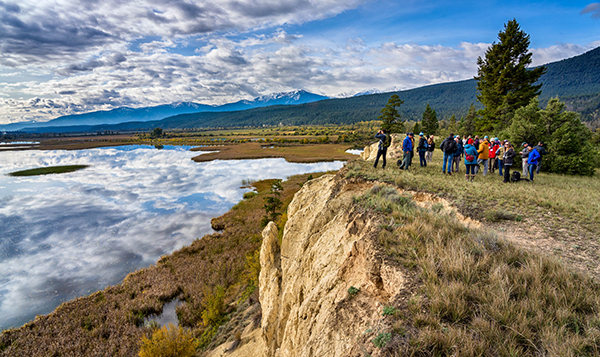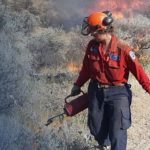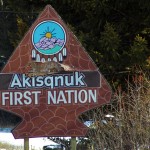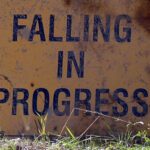Home »

2019 Conservation Leadership Awards announced
The Kootenay Conservation Program (KCP) announced the recipients of its annual Conservation Leadership Award on Friday, October 4 in Invermere as part of the annual KCP Fall Gathering
For the East Kootenay, the joint 2019 honours went to Dan Murphy and Susan Bond, both formerly with the Rocky Mountain Trench Ecosystem Restoration Program. Dan Murphy received a framed Pat Morrow photograph of an eagle while Mary Ellen Bond (who attended on behalf of her sister Susan, now deceased) was gifted a trip with Columbia River Paddle.
For the West Kootenay, the 2019 recipient was Dr. Michael Proctor with the Trans-border Grizzly Bear Project, who received a framed photograph of a turtle by Marc-Andre Beaucher.
DAN MURPHY & SUSAN BOND
Dan Murphy and Susan Bond were a key tag-team of conservation action in the East Kootenay for many years, driving the Rocky Mountain Trench Ecosystem Restoration Program to great success.
Dan and Susan worked together to promote ecosystem restoration (ER) in the East Kootenay. Dan, now retired as Executive Director of the Trench Society, juggled funding proposals, project delivery and supporting the Trench Society membership.
Susan (who passed away June 30, 2018) provided expert communications, raising public support for ER activities such as forest thinning and prescribed burns. She produced the acclaimed Blueprint for Action document that continues to be used as the template for ER in the region and beyond.
Together, they led the Trench Society, a broad coalition of conservation-focused organizations including hunters, naturalists, ranchers, and environmentalists. Both Dan and Susan were highly respected by all these groups, showing remarkable leadership in guiding this keystone program that has become a model for similar actions throughout the province.
Susan and Dan also worked closely with associated ER Program committees that included government and First Nation agency foresters and ecologists. Never hesitating to push the ER objectives when they felt the program was lagging, they were tenacious in asking difficult questions and moving ER forward.
Their combined work helped foster a strong conservation ethic among many East Kootenay landowners and managers.
MICHAEL PROCTOR
As the lead Canadian researcher with the Trans-border Grizzly Bear Project, Dr. Michael Proctor has identified key linkage areas for grizzlies all along Highway 3—a major barrier for wildlife movement across southern B.C. and Alberta—giving conservation organizations an all-important scientific foundation for deciding where and what to conserve.

His independent research on grizzly bears underpins much science-based work in the region, such as where to secure conservation land on private property based on grizzly bear movement corridors.
Michael works with the South Selkirk grizzly bear population, a small and threatened group of bears that roam the mountains around Nelson and Creston. Knowing where the bears go — and where they don’t go — is critical to guiding efforts to protect habitat for these magnificent and ecologically important creatures, and Michael has been catching bears to outfit them with radio collars since 2006.
Michael has also been a strong advocate of land trusts in B.C. and the Nature Conservancy of Canada (NCC)’s Frog-Bear conservation area near Creston is an example of how his science-based research and land conservation can go hand-in-hand to help restore grizzly bear populations in southeastern British Columbia.
Michael also sits on the Science Advisory Committee to the B.C. Board of NCC, is a scientific advisor for the International Union for Conservation of Nature’s Bear Specialist Group, and works around the world on bear issues.
Recently, Michael has helped spearhead the Kootenay Connect project, where his science has led to the prioritization of where riparian corridors and grizzly bear movements overlap — work to help restore and conserve these are underway.
His science, enthusiasm, and drive have moved conservation forward in the Kootenay region over the past 25 years.
Each year, the KCP recognizes one individual from the East Kootenay and one from the West who is a proven leader contributing to conservation in the Kootenays. Candidates must have a minimum of three nominators, be affiliated with a KCP partner organization, and award recipients are selected by a committee.
The Kootenay Conservation Program is a broad partnership of over 80 organizations from across the Kootenays that works to conserve landscapes in order to sustain naturally functioning ecosystems. Learn more at www.kootenayconservation.ca.
Lead image: Dan Murphy and Mary Ellen Bond, centre, sister of Susan Bond receiving the honours. Photo by Pat Morrow
The Kootenay Conservation Program held its 2019 Fall Gathering in the Invermere area on Oct 4-5 with the organizing theme of ‘Biodiversity Hotspots in the Kootenays.’ Over 60 participants from more than 30 partner organizations came together for a full-day conference at Copper Point Resort on Friday, which was followed by a field tour on Saturday. Pictured is the field tour group at the new Nature Trust of BC Columbia River Wetlands – Edgewater property. KCP is a broad partnership of over 80 organizations from across the Kootenays that works to conserve landscapes in order to sustain naturally functioning ecosystems.
 Submitted by Kootenay Conservation Program
Submitted by Kootenay Conservation Program








